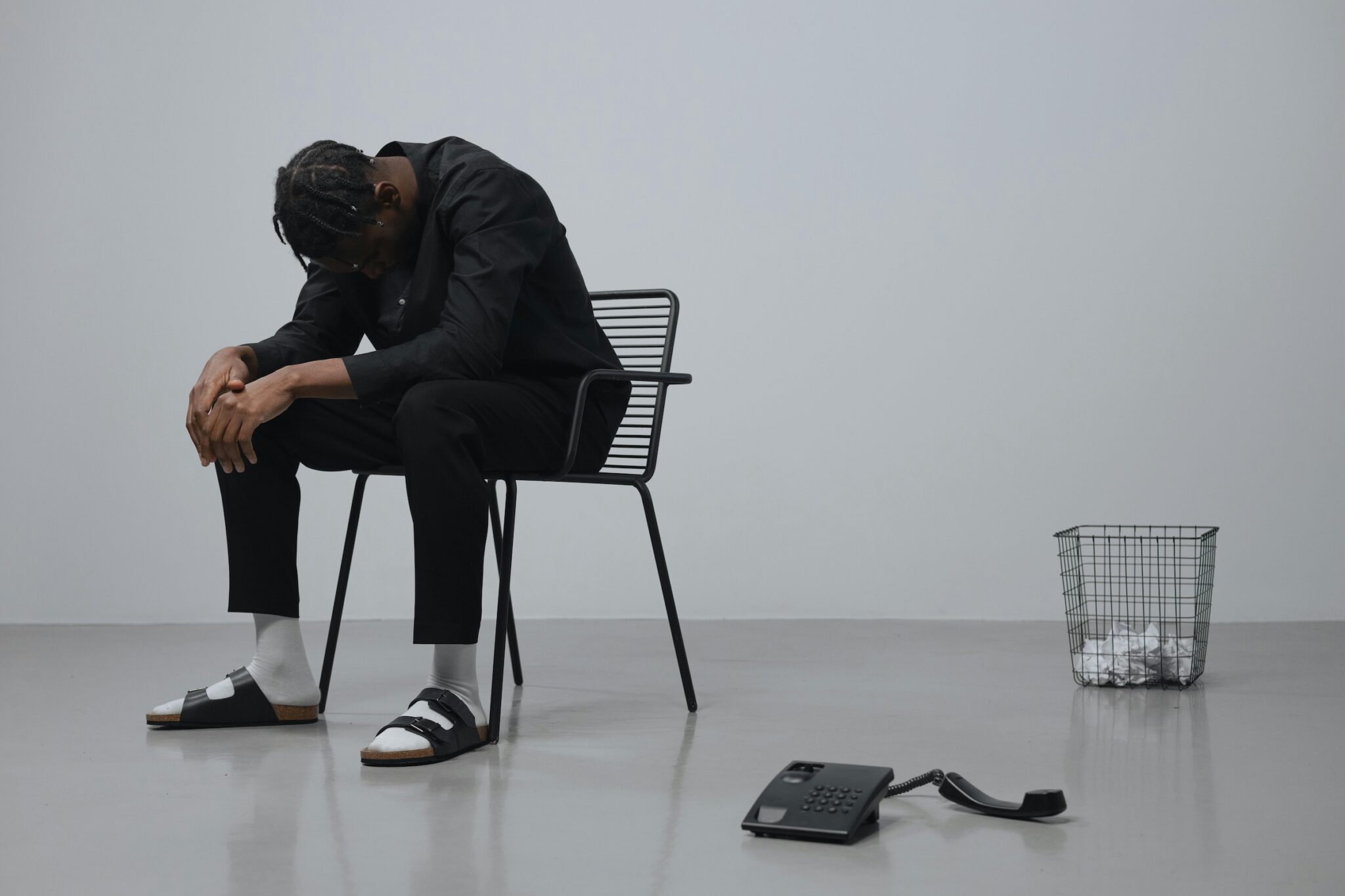Energetic Burnout


Introduction
Energetic burnout is more than just physical exhaustion—it’s a profound sense of depletion that affects every layer of one’s being. Unlike temporary tiredness, which a good night’s sleep can often cure, energetic burnout leaves people feeling disconnected, unable to regain their zest for life. This form of burnout, often linked to prolonged stress or intense caregiving roles, has become increasingly common in our fast-paced world. With the right combination of conventional and holistic treatments, however, it is possible to manage and recover from this deep exhaustion. Let’s discover what energetic burnout entails, its causes, and effective ways to recharge.
What is Energetic Burnout?
Energetic burnout is more than just physical exhaustion—it’s a profound sense of depletion that affects every layer of one’s being. Unlike temporary tiredness, which a good night’s sleep can often cure, energetic burnout leaves people feeling disconnected, unable to regain their zest for life. This form of burnout, often linked to prolonged stress or intense caregiving roles, has become increasingly common in our fast-paced world. With the right combination of conventional and holistic treatments, however, it is possible to manage and recover from this deep exhaustion. Let’s discover what energetic burnout entails, its causes, and effective ways to recharge.
Symptoms of Energetic Burnout
Anxiety manifests in both physical and psychological symptoms, oEnergetic burnout often presents as a profound and persistent exhaustion that affects both physical and emotional well-being. Common symptoms include:
- Chronic Fatigue: A deep sense of tiredness that rest doesn’t alleviate, often leaving individuals feeling drained throughout the day.
- Mental Fog: Difficulty concentrating, forgetfulness, and a lack of mental clarity that can impact productivity and decision-making.
- Emotional Detachment: Feelings of apathy, irritability, or emotional numbness, with reduced motivation and enthusiasm for previously enjoyable activities.
- Physical Aches: Muscle tension, headaches, and even joint pain can arise due to prolonged stress and energetic depletion.
- Sleep Disturbances: Trouble falling asleep, staying asleep, or waking up feeling unrefreshed, exacerbating fatigue.
These symptoms indicate a deep level of exhaustion and often signal a need for holistic recovery strategies to restore energy and resilience.
Causes and Contributing Factors
Energetic burnout often arises from various overlapping factors. Key contributors include:
- Chronic Stress: Ongoing stress keeps the body’s fight-or-flight response in overdrive, leading to adrenal fatigue and energy depletion.
- Emotional Strain: Long-term caregiving or being in emotionally demanding situations can drain one’s energy, especially if there are few opportunities for self-care.
- Unbalanced Lifestyle: Irregular sleep, poor diet, lack of exercise, and limited downtime can create an imbalance that depletes mental and physical energy.
- Perfectionism and Overachievement: People who constantly strive for perfection or have high expectations of themselves may end up overextending, leading to burnout when these standards aren’t met.
- Lack of Fulfillment: Feeling disconnected from one’s purpose can drain energy, making even small tasks feel insurmountable.
Conventional Approaches to Treatment
Conventional treatments for energetic burnout generally focus on restoring balance and managing stress. Here are some approaches that are commonly recommended:
- Therapy and Counseling: Talking to a mental health professional helps individuals identify the root causes of burnout and develop effective coping strategies. Cognitive-behavioral therapy (CBT) is known to help shift negative thought patterns.
- Rest and Recovery: Consistent, quality sleep and setting boundaries to allow for rest are critical to overcoming burnout. Professionals often recommend developing a sleep routine that includes a nightly wind-down period.
- Mindfulness-Based Stress Reduction (MBSR): This approach combines mindfulness with stress reduction techniques. Studies show that MBSR improves resilience and reduces symptoms of burnout, especially in high-stress environments.
- Physical Activity: Regular low-impact exercises, such as swimming, walking, or light strength training, release endorphins that can help counteract stress and support recovery from burnout without putting too much strain on the body.
Holistic and Alternative Treatments
For those looking to address burnout on multiple levels, holistic and alternative treatments provide a unique approach. These practices help to replenish energy by addressing the physical, mental, and spiritual aspects of burnout.
- Reiki: it channels healing energy into the body to balance its energy fields, promoting relaxation and reducing stress. Practitioners often find that reiki sessions bring a deep sense of calm and revitalization for those experiencing burnout¹⁰.
- Yoga: it combines mindful breathing, physical movement, and meditation, which help to release tension and restore mental and physical energy. Restorative yoga, in particular, is ideal for those recovering from burnout as it gently relaxes the body and mind¹¹.
- Acupuncture: where thin needles are inserted at specific points on the body to stimulate energy flow and alleviate tension. This practice has been shown to reduce stress-related symptoms and improve energy levels, making acupuncture a helpful treatment for burnout.
- Healing Touch: Healing Touch is a non-invasive therapy that aims to restore balance in the body’s energy field. By clearing blocked or stagnant energy, healing touch helps reduce stress and promote a calm, centered state that aids in burnout recovery.
- Pranic Healing: Pranic healing uses no-touch techniques to cleanse and revitalize the body’s energy field, removing stagnant energy and recharging depleted reserves. This practice is especially effective for individuals dealing with extreme fatigue and emotional strain.
- Crystal Healing: This practice involves placing specific crystals, like amethyst and rose quartz, around the body to support energy alignment and stress relief. Crystal healing is believed to work by aligning with the body’s natural energy frequencies, promoting balance and calm for those experiencing burnout.
- Herbal Medicine: Adaptogens such as ashwagandha, rhodiola, and holy basil help the body respond to stress and support adrenal health. Herbal medicine naturally balances cortisol levels, making it particularly effective for managing burnout symptoms.
- Qigong: Rotten in Traditional Chinese Medicine, qigong combines gentle movement, breath control, and meditation to cultivate and balance life energy. Research has shown that practices like qigong are linked to lower cortisol levels, improved mood and increased physical energy.
Lifestyle and Prevention Tips
Addressing lifestyle factors can help prevent burnout from developing or worsening. Here are some practical strategies:
- Set Boundaries: Clear limits on work, family, and social obligations help ensure you have time for rest and self-care.
- Prioritize Sleep: Quality sleep is essential for both physical and mental recovery. Establish a regular sleep schedule, aiming for 7-9 hours of rest each night to support well-being.
- Balanced Nutrition: A diet rich in whole foods, lean proteins, and complex carbohydrates can help sustain energy. Avoiding sugar and caffeine prevents energy crashes that exacerbate burnout.
- Practice Relaxation Techniques: Daily practices like meditation or breathwork provide stress relief and can build resilience to future stressors.
- Incorporate Regular Physical Activity: Gentle exercise, such as yoga or walking, helps to balance stress hormones and elevate mood, creating a natural defense against burnout⁹.
Real-Life Examples
Many people recovering from burnout find that combining holistic practices into their daily routines helps tremendously. For example, Gary tells us how he used Qigong to help Emily, a young lady who had been suffering from chronic fatigue for years. Gary designed a tailored qigong practice that focused on replenishing her energy reserves and balancing her qi. Not only did Emily’s physical energy improve, but she also noticed a significant positive shift in her mental and emotional well-being.
Interesting Facts
- Burnout doesn’t just drain energy; it impacts physical health, often causing headaches, digestive issues, and weakened immunity.
- Burnout increases the risk of heart disease by 40% due to prolonged exposure to stress hormones.
- Recognized by the World Health Organization, burnout affects not only professionals but also caregivers, students, and anyone under extended stress.
Conclusion
Energetic burnout affects every part of a person’s well-being, but with a balanced approach, recovery is possible. Blending conventional therapies, like counseling and mindfulness, with holistic practices such as reiki, yoga, and acupuncture can restore energy and resilience. Through mindful lifestyle choices and preventive self-care, individuals can protect themselves from burnout and maintain a sustainable, fulfilling lifestyle.
Newsletter
Sign up for emails to get the scoop on our latest articles, new developments and more.

